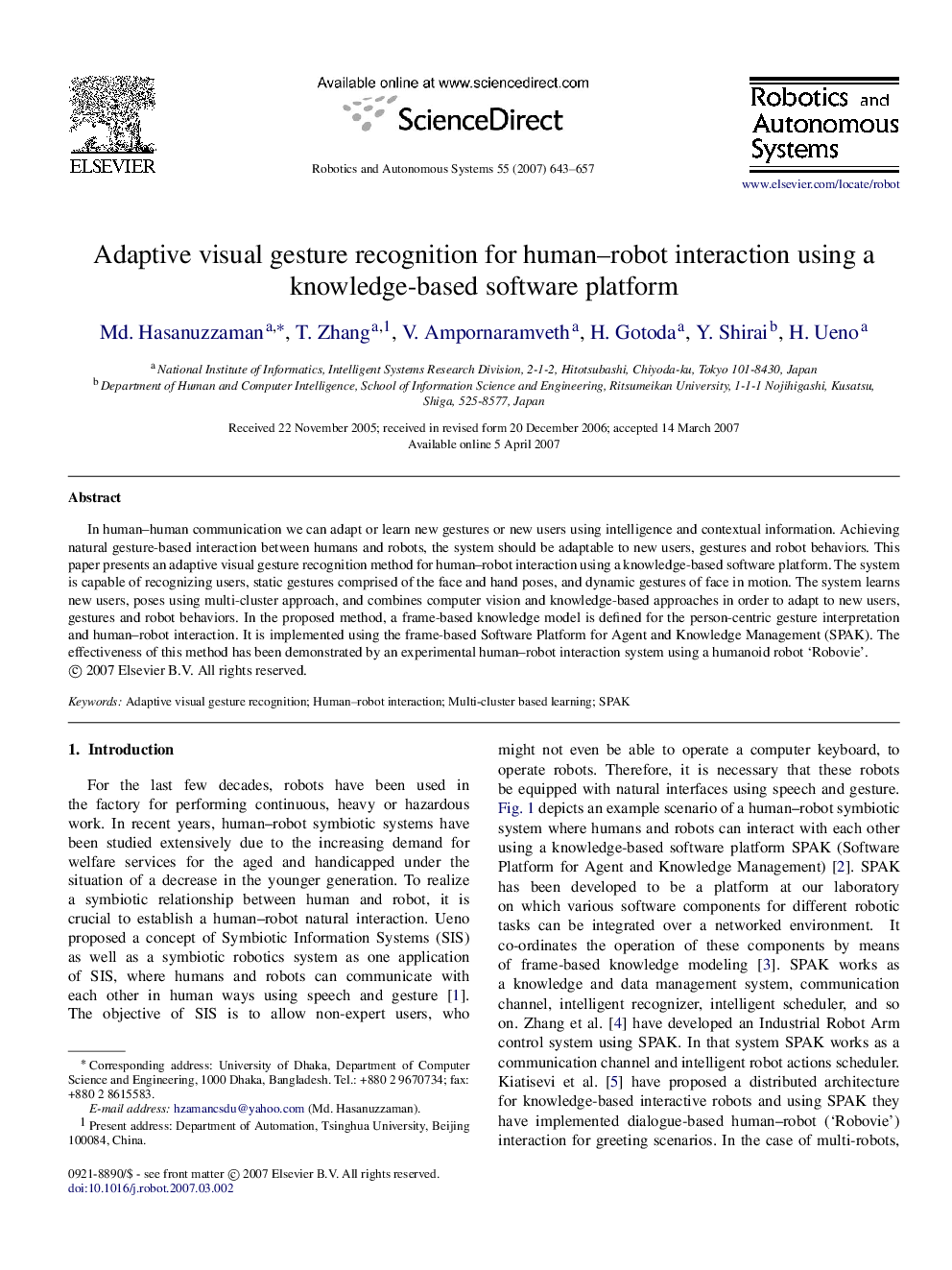| Article ID | Journal | Published Year | Pages | File Type |
|---|---|---|---|---|
| 412680 | Robotics and Autonomous Systems | 2007 | 15 Pages |
In human–human communication we can adapt or learn new gestures or new users using intelligence and contextual information. Achieving natural gesture-based interaction between humans and robots, the system should be adaptable to new users, gestures and robot behaviors. This paper presents an adaptive visual gesture recognition method for human–robot interaction using a knowledge-based software platform. The system is capable of recognizing users, static gestures comprised of the face and hand poses, and dynamic gestures of face in motion. The system learns new users, poses using multi-cluster approach, and combines computer vision and knowledge-based approaches in order to adapt to new users, gestures and robot behaviors. In the proposed method, a frame-based knowledge model is defined for the person-centric gesture interpretation and human–robot interaction. It is implemented using the frame-based Software Platform for Agent and Knowledge Management (SPAK). The effectiveness of this method has been demonstrated by an experimental human–robot interaction system using a humanoid robot ‘Robovie’.
